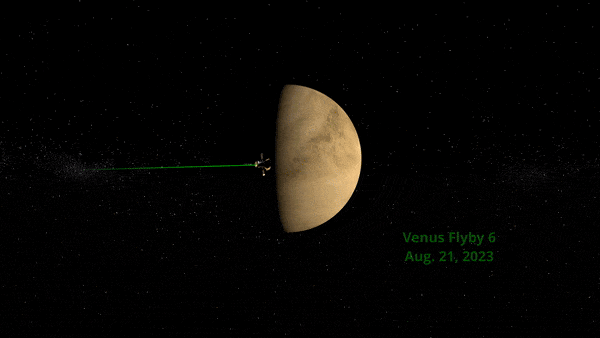
On September 27, 2023, NASA’s Parker Solar Probe made its 17th close approach to the Sun, breaking its own record by coming within 4.51 million miles of the solar surface. Assisted by a gravity-aided flyby of Venus, the probe achieved a speed of 394,736 mph, marking another record. Credit: NASA GSFC/CIL/Brian Monroe
NASA’s Parker Solar Probe broke its own record by approaching within 4.51 million miles of the Sun on September 27, 2023, also achieving a record speed during its approach.
NASA’s Parker Solar Probe completed its 17th close approach to the Sun on September 27, 2023, breaking its own distance record by skimming just 4.51 million miles (7.26 million kilometers) from the solar surface.
Set up by a gravity-assist flyby of Venus on August 21, the close approach (known as perihelion) occurred at 7:28 p.m. EDT, with Parker Solar Probe moving 394,736 miles per hour (635,266 kilometers per hour) around the Sun – another record. The milestone also marked the midway point in the mission’s 17th solar encounter, which began September 22 and continues through October 3.

Parker Solar Probe’s 17th orbit included a perihelion that brought the spacecraft within 4.51 million miles of the Sun. Credit: NASA/Johns Hopkins APL/Steve Gribben
The spacecraft entered the encounter in good health, with all systems operating normally. Parker Solar Probe is scheduled to check back in with mission operators at the Johns Hopkins Applied Physics Laboratory in Laurel, Maryland – where the spacecraft was also designed and built – by sending a stream of telemetry (status data) on October 1.
The spacecraft will transmit science data from the encounter – largely covering the properties, structure, and behavior of the solar wind as it launches off the Sun – back to Earth from October 4 – 19.

Artist’s concept of NASA’s Parker Solar Probe spacecraft flying through the Sun’s corona to trace how energy and heat move through the star’s atmosphere. Credits: NASA/Johns Hopkins APL
Launched in 2018, NASA’s Parker Solar Probe is on an unparalleled journey to study the Sun’s outer atmosphere. Designed to brave extreme heat and radiation, the probe will come within 3.83 million miles of the Sun’s surface, closer than any previous spacecraft.
Over seven years and 24 orbits, with the aid of Venus for gravitational assists, the probe will examine the Sun’s corona, the solar wind, and solar energetic particles. Its findings aim to enhance our understanding of solar phenomena and their effects on Earth.